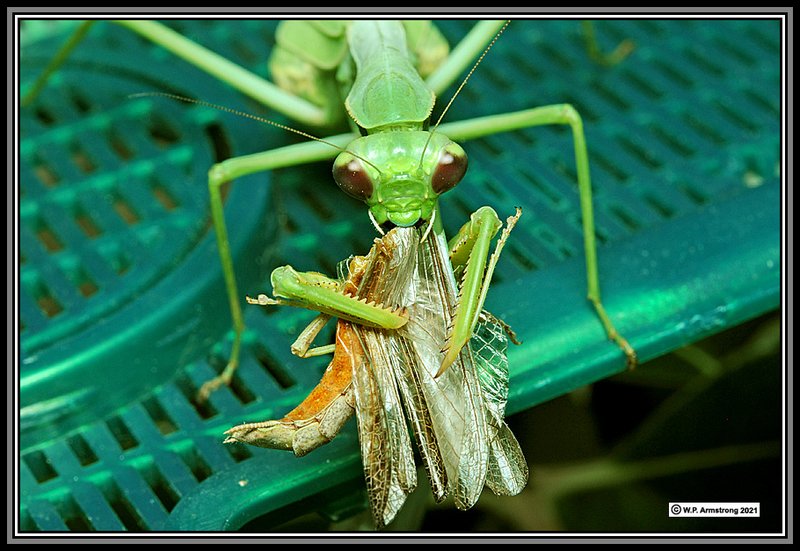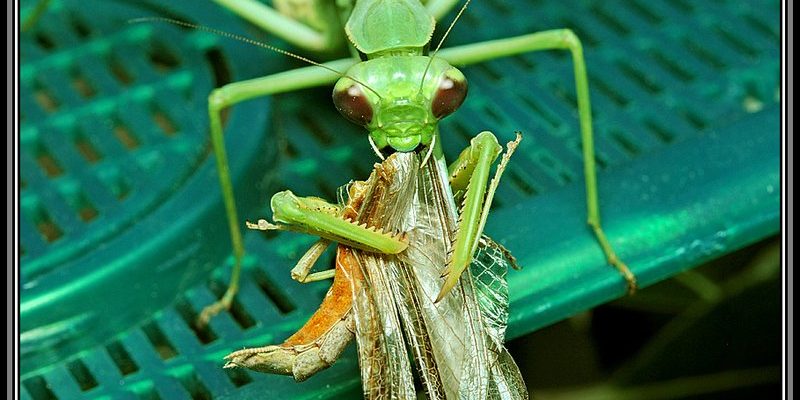
Now, you might be thinking, “Pollination? Really?” Yes, it’s true! While they may not be the heavyweights like bees or butterflies, mantids can lend a hand in this essential process. Imagine a tiny superhero, flying under the radar and contributing to our food supply and ecosystem health. Let’s explore the fascinating world of mantids and their various roles, shall we?
What Exactly is Pollination?
Before we talk about mantids and their role in pollination, let’s clarify what pollination really means. In simple terms, pollination is the process by which pollen from the male part of a flower (the anther) travels to the female part (the stigma). This transfer helps plants reproduce, leading to the formation of seeds and fruits.
Pollination can occur in several ways. It can happen through the wind, water, or animals, like insects. Bees are the most known pollinators, celebrated for their hard work. However, other insects, including mantids, can also play a part. Although they aren’t as efficient as bees, every little bit helps when it comes to maintaining healthy ecosystems and beautiful gardens.
In gardens, many flowers rely on insect pollinators to thrive. Flowers like sunflowers, marigolds, and lavender attract various pollinators. You might be wondering how mantids fit into this picture. Let me explain: while they may not be the stars of the pollination show, they do occasionally visit flowers, gathering nectar. In the process, they can unknowingly transfer pollen, aiding in pollination.
Mantids as Nature’s Pest Controllers
Besides pollination, mantids are renowned for their ability to control pest populations. These predatory insects primarily feed on other insects, and this can be incredibly beneficial for gardeners and farmers alike. Imagine a tiny, green ninja, silently stalking its prey, ready to pounce on unsuspecting aphids or caterpillars.
A praying mantis will patiently wait for its next meal, camouflaged among leaves or flowers. Once a target comes close enough, the mantis strikes swiftly, catching the prey in its strong front legs. This natural pest control can significantly reduce the number of harmful insects, making mantids an excellent ally for anyone looking to keep their garden healthy.
Using a mantid as a form of pest control has a few perks. For one, it’s chemical-free! This means you can maintain a more organic approach to gardening. Plus, introducing mantids can encourage biodiversity, which often leads to healthier ecosystems. And let’s be honest—who doesn’t love the idea of having powerful little helpers in their garden?
Life Cycle of a Mantid
Now that we’ve discussed their roles, let’s take a closer look at the life cycle of a mantid. Understanding how they grow and develop helps us appreciate these insects more. A mantid’s life begins as an egg, laid in a protective case called an ootheca. This structure is made of a firm, foam-like material that keeps the eggs safe from predators and harsh weather.
Once the eggs hatch, tiny nymphs emerge, looking quite like miniature versions of adult mantids. They don’t have wings yet and must molt several times to grow. Each time they shed their skin, they become larger and more defined. This process can take several weeks, and depending on the species, a mantid could take anywhere from a few months to a year to reach adulthood.
As they mature, mantids become more skilled predators. They develop their signature triangular heads, large eyes, and impressive forelegs. Once they reach adulthood, they can be busy with their various jobs—hunting, pollinating, or mating.
How Mantids Affect Their Ecosystem
The roles of mantids in their ecosystem go beyond just pollination and pest control. They are part of a complex web of interactions among different species. By helping control pest populations, they indirectly support other creatures in the food chain. For instance, by keeping aphids in check, mantids help ensure that ladybugs and other beneficial insects have enough food to thrive.
Moreover, mantids serve as a food source for larger animals, such as birds and reptiles. They might be small, but their presence can help maintain a balanced ecosystem. When there are enough mantids, it supports various wildlife, creating a healthy habitat for all organisms involved.
You might be surprised to learn this, but mantids also contribute to soil health. When they hunt, they often consume insects that would otherwise damage plants or carry diseases. By keeping those populations down, mantids can help maintain a balanced environment that promotes healthy plant growth and soil quality.
How to Attract Mantids to Your Garden
If you’re intrigued by mantids and want to invite them into your garden, there are a few simple steps you can take. First off, providing a diverse range of plants can draw them in. Flowers that bloom at different times during the seasons will attract various insects, including mantids. Consider adding plants like yarrow, dill, or marigolds to create a welcoming environment.
Next, try minimizing the use of pesticides in your garden. While it can be tempting to spray for pests, doing so can harm not only the bad insects but also beneficial ones like mantids. Opt for natural pest control methods when possible. You can also provide shelter with tall grasses, shrubs, and native plants where they can hide and hunt.
Finally, consider purchasing mantid egg cases. These can be found at gardening stores or online and can easily be placed in your garden to encourage mantid populations. Once the nymphs hatch, you’ll have a whole team of tiny hunters ready to help keep your garden healthy!
Common Misconceptions About Mantids
Even though mantids are cool critters, there are a few misconceptions about them. For example, some people think they only eat flowers or plants, which is simply not true. As discussed earlier, they are fierce hunters that primarily feed on other insects. This can sometimes lead to the misunderstanding that they’re harmful to your garden—when, in fact, they offer many benefits!
Another popular myth is that mantids are dangerous to humans. While they can look intimidating with their large eyes and swift movements, they’re generally harmless to people. They don’t bite unless provoked and would rather scuttle away than confront a human.
It’s also worth noting that mantids are not as prolific in pollination as bees, but their contribution should not be dismissed. In gardens, every pollinator counts, and mantids can help balance the ecosystem. So, the next time you see one, appreciate the tiny creature for its unique qualities and valuable roles.
The Importance of Mantids in Biodiversity
In a world where many species are declining, mantids play an essential role in maintaining biodiversity. By controlling pests and participating in pollination, they contribute to healthy ecosystems that support a variety of plant and animal life. This interconnectedness is vital for the survival of many species, including our own.
Encouraging mantids and other beneficial insects can lead to more sustainable gardening practices. As we become more aware of our environment, understanding the roles of creatures like mantids can help us make better choices for our ecosystems. By nurturing biodiversity, we create a healthier, more resilient environment for future generations.
In conclusion, mantids are more than just fascinating insects. They play crucial roles in pollination, pest control, and the overall health of our ecosystems. By appreciating their contributions and taking steps to welcome them into our gardens, we can support these incredible creatures and the vital work they do. So, next time you spot a mantid, take a moment to admire its silent yet powerful presence in the natural world.

